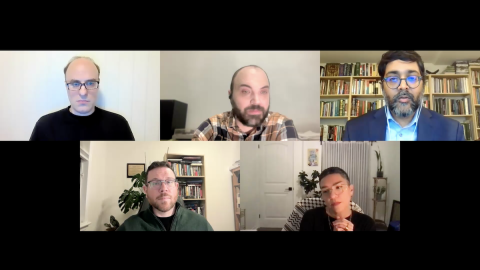What Were They Thinking?
Sometimes, you just have to wonder what is happening in Canada’s schools. As it turns out, October was quite the month for people who think about freedom of expression in education. Actually, it seems to have been a prize month for some people who don’t spend much time thinking at all.
In October, the Waterloo Regional District School Board announced its decision to examine all elementary and secondary school libraries and then to “weed” them of “harmful” material.
We don’t know, however, is what is meant by harm, and who gets to decide what stays and what goes. As usual, equity and diversity are mentioned as a rationale. It is easy to imagine that libraries would want to add books which contain, for example, diverse characters, and discussions about equity. It is a lot more difficult to imagine which books should be removed on this basis. Do we want to get rid of books that have only white characters? What about books that are about our long and inequitable history? Are there particular words we need to expunge?
We understand that libraries do not have infinite shelf space. If schools want to remove torn and tattered books, books that have more recent editions, multiple copies, or books with significant errors, these administrative and practical purposes make sense. If, however, the weeding removes books that met libraries' selection criteria in the past but contain controversial language no longer considered acceptable, or show certain groups of people in a negative light, what will the readers miss? Clearly, they won’t know.
If you are unaware that something exists, you won’t be able to hate it, love it, write a thesis about it, or most importantly for schools, discuss it. Freedom of expression has two ends to it. It isn’t only about what we are able to express, it is also about our ability to see, hear, and read other people’s expression – and evaluate it in any fashion we choose.
But yes, some expression needs to be questioned. Consider the high school teacher who chose to appear in blackface in his classes during Halloween. He did not seem to be clear, when asked, what his costume was meant to portray – other than to say he thought it looked “cool.”
I do not think we even need to know about the diversity of his school’s population to think that something is very wrong with this teacher’s judgment. Yes, it was a racist act, but honestly, how did he even get to class dressed like that? Surely other adults must have noticed his appearance that morning. The students certainly did. Several phoned their families, complained to the principal and there were a few photos taken too. The principal has apologized to the school community and the teacher is on home assignment duty. Even if he could somehow show that his intent was not what it appeared to be (was he trying to dress as a bat?) his serious lack of judgment makes one wonder what else was happening in his classroom.
Now we come to another teacher who has appeared in the media. Evidently, she has been teaching a book that contains the kind of language that would likely get it removed from school libraries in the Waterloo Region. The teacher was explaining to her grade 8 students that Agatha Christie’s And Then There Were None had been published under two previous titles, both of which are now unacceptable. She was also warning her students that the “N” word (used in one of the book’s earlier titles) is also found in the text. Her error, however, was to speak full word.
A student of colour was so upset to hear this word that she has been staying at home since the event. Was she upset to hear the word from the mouth of her white teacher, to hear it at all, or to know that the class would be reading a book that contained this language?
The school has decided to remove the book from its curriculum. What else will be removed? Some have called for books by Joseph Conrad (author of The N… of the Narcissus), and Mark Twain, among others, to be permanently removed from curricula and school libraries. All of these writers (and quite a few others) use this forbidden word.
In the U.S., there is now a movement to ban “critical race theory” from being taught in schools. It isn’t actually being taught in elementary and high schools. These critics of CRT want to remove all mention of race and racism. Some of these critics are basically racist, and other believe that if race and racism are never mentioned, the problem will magically disappear, it will simply go away. It won’t. That teacher who says, “I don’t see colour, I only see children,” is deluding herself and insulting her students. When do kids learn about race? As soon as they hear their first racist remark – often before they are old enough to go to school.
If we cannot teach and learn about the power of words, if we cannot explore the history of race and racism, if there is no context brought to the differences in our communities, we should expect to find more people like the teacher who chose to wear blackface to school because he did not understand that there was a problem with doing so.

